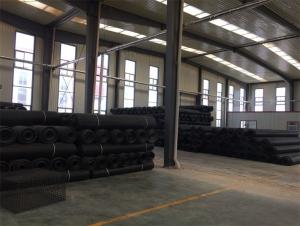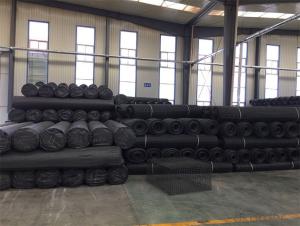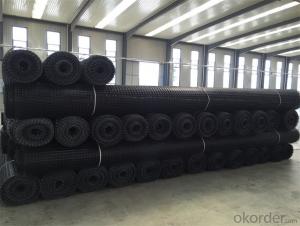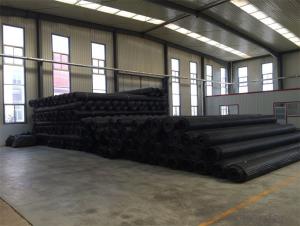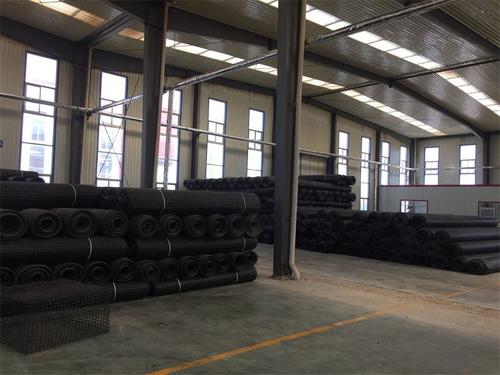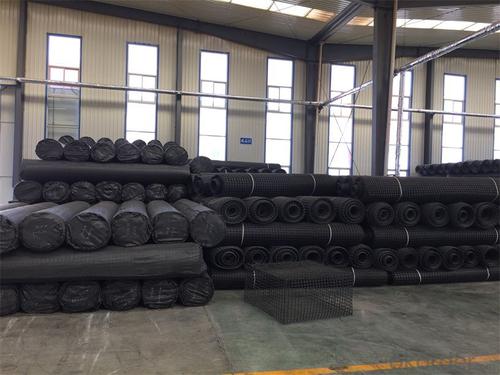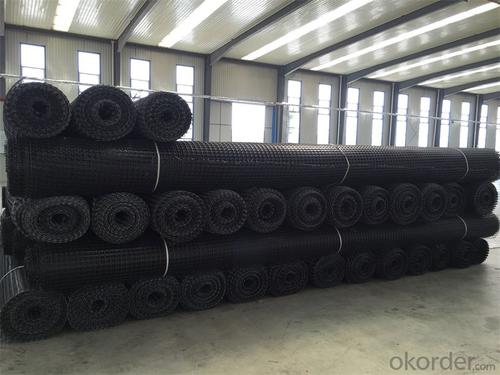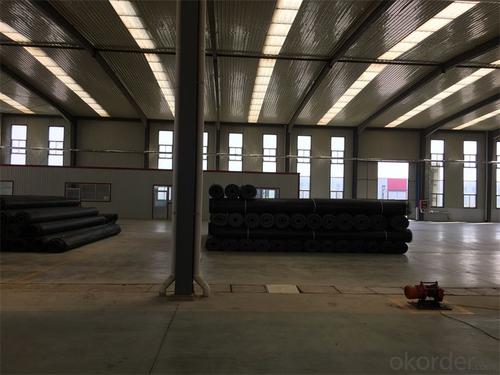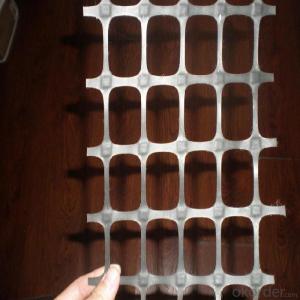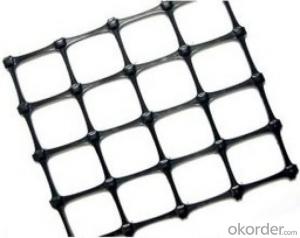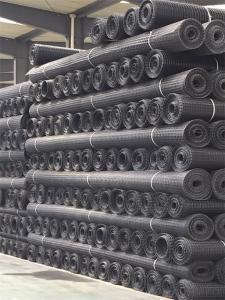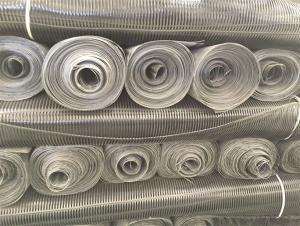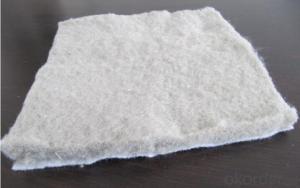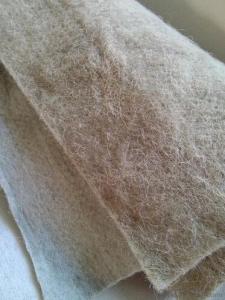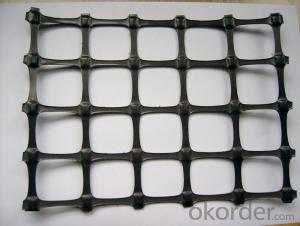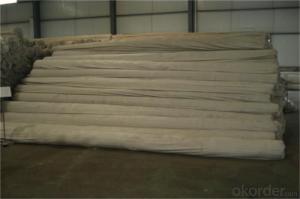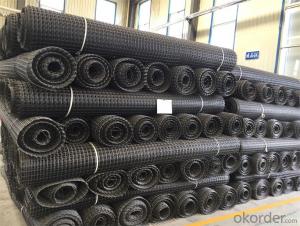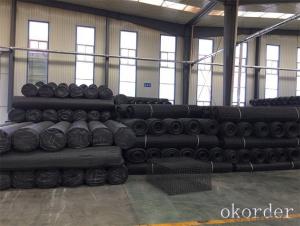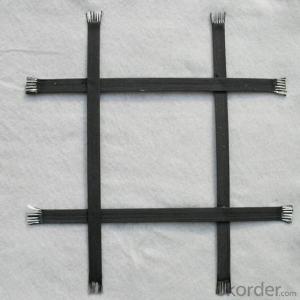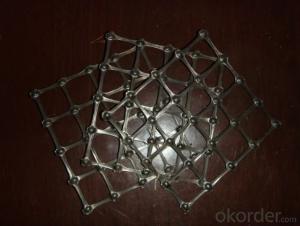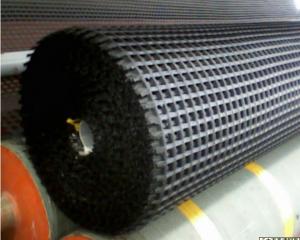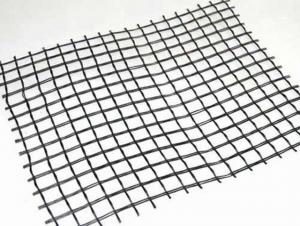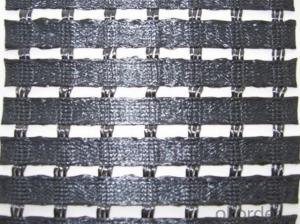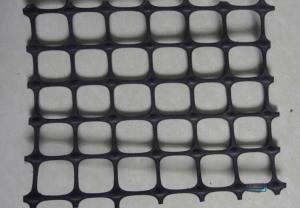Geogrid Stragrip Sg-150 - Polyester Biaxial Plastic Geogrid with High Tensile Strength Warp Knitted Cmax
- Loading Port:
- Tianjin
- Payment Terms:
- TT OR LC
- Min Order Qty:
- 20000 m²
- Supply Capability:
- 50000000 m²/month
OKorder Service Pledge
OKorder Financial Service
You Might Also Like
Fiberglass Geogrid Introduction:
Fiberglass geogrid is a kind of planar mesh material using alkali-free fiberglass yarn as base body and then coated with high quality modified asphalt. It is warp knitted with oriental structure which gives full play of yarn strength and improves its mechanical property to make the product high tensile, tearing and creep-resistant. Moreover, the composite property of coating with asphalt makes full protection of the fiberglass matrix and greatly improves its wear and shear resistance. All the advantageous functions make the product have a good performance in pavement strengthening, track cracking and solving difficulties of strengthening the bituminous pavement.
Fiberglass Geogrid Features:
1. Light weight, high tensile strength, high modulus, low elongation and good toughness.
2. Corrosion resistance, no long-term creep, long life span.
3. Good physical and chemical stability and good thermal stability.
4. Resistant to fatigue cracking, high-temperature track and low temperature shrinkage cracking.
5. Delaying and decreasing crack reflection.
Specifications | PET20-20 | PET30-30 | PET40-40 | PET50-50 | PET80-80 | PET100-100 | PET120-120 |
Elongation(%) | 10%~15% | ||||||
Vert Tensile strength(KN/m) | 20 | 30 | 40 | 50 | 80 | 100 | 120 |
Horiz Tensile strength(KN/m) | 20 | 30 | 40 | 50 | 80 | 100 | 120 |
Grid(mm) | 12.5×12.5 20×20 24.5×24.5 | ||||||
Width(m) | 1—6 | ||||||
Fiberglass Geogrid Application:
1. Road surface asphalt overlay construction engineering; Asphalt layers
reinforcement.
2. Converting old cement concrete road into composite road; Restraining
reflection cracking caused by block shrinkage.
3. Road extension; Preventing and controlling the cracking caused by new
and old combination and uneven settlement.
4. Treatment of the conjunction between tunnel and bridge or foundation.
Packaging & Shipping:
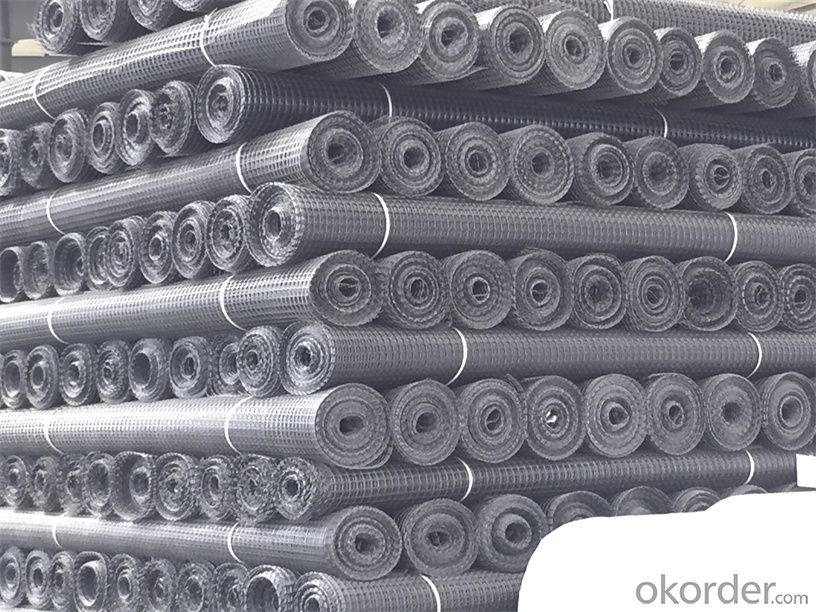
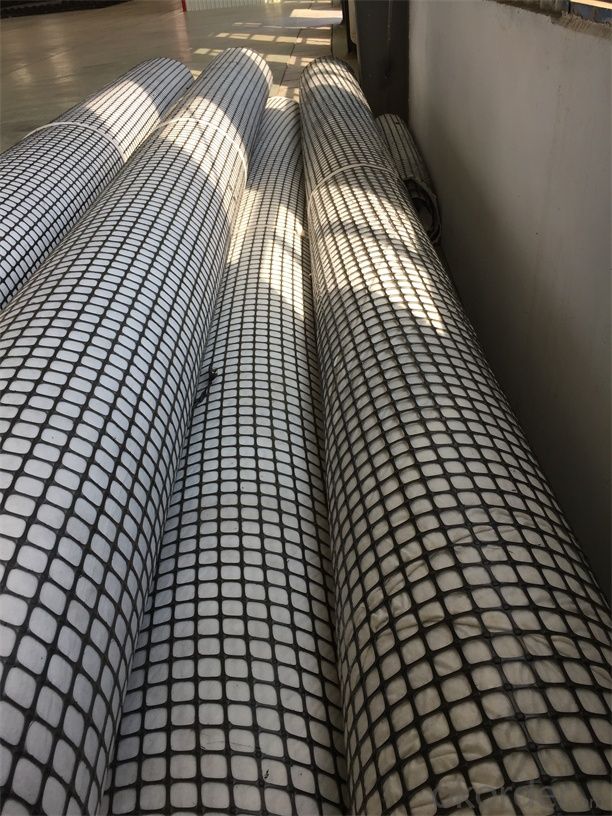
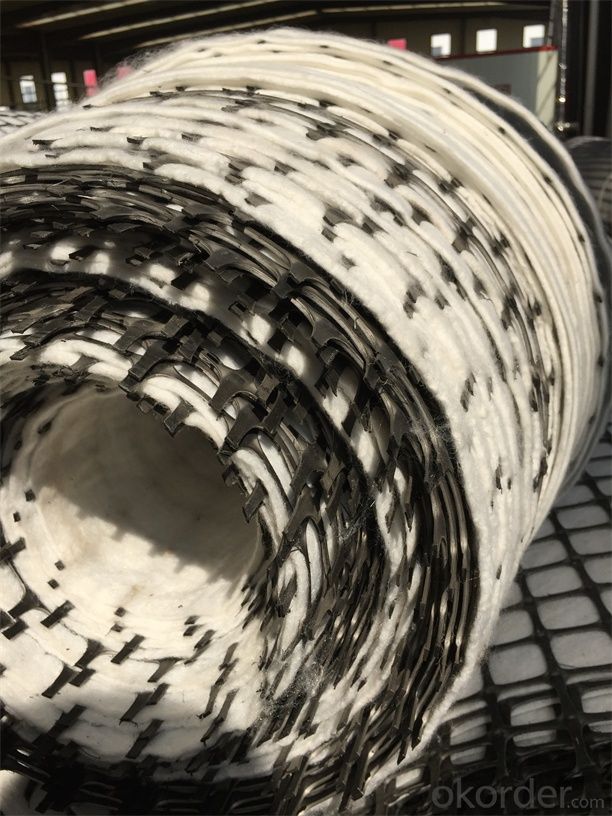
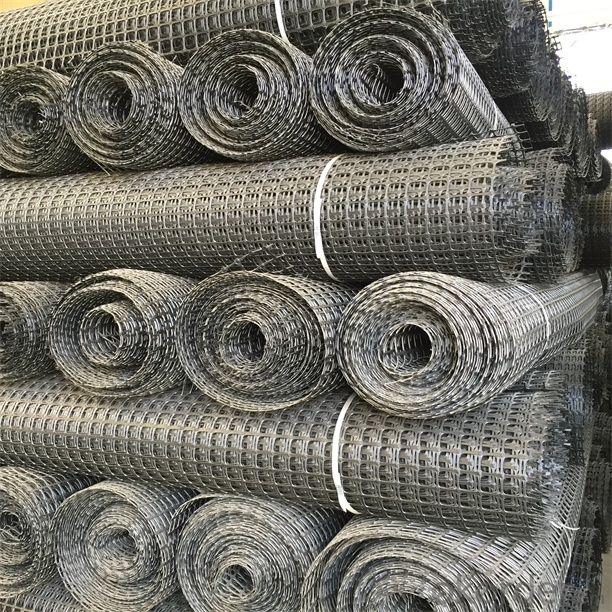
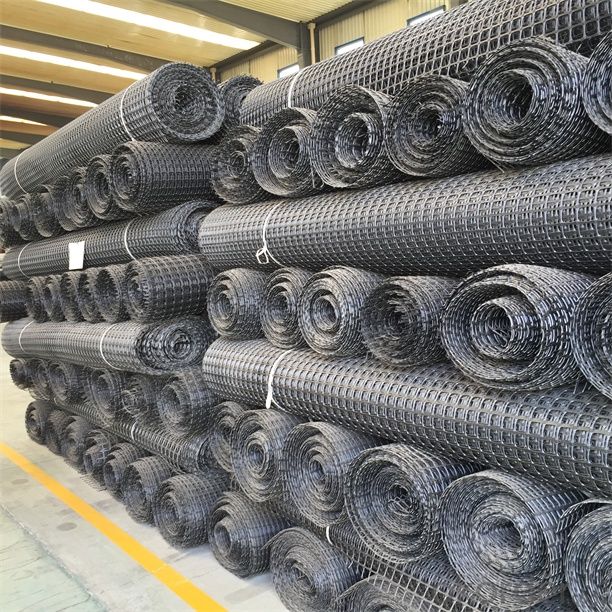

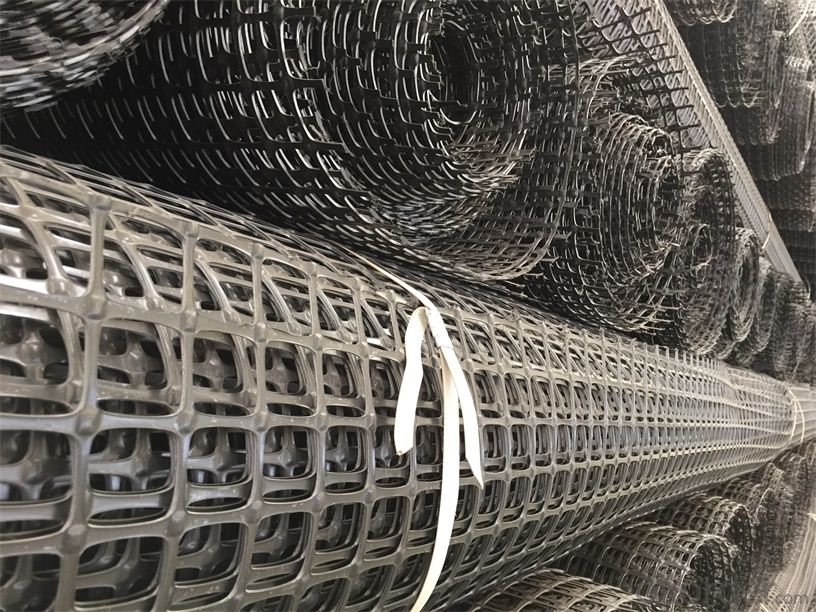
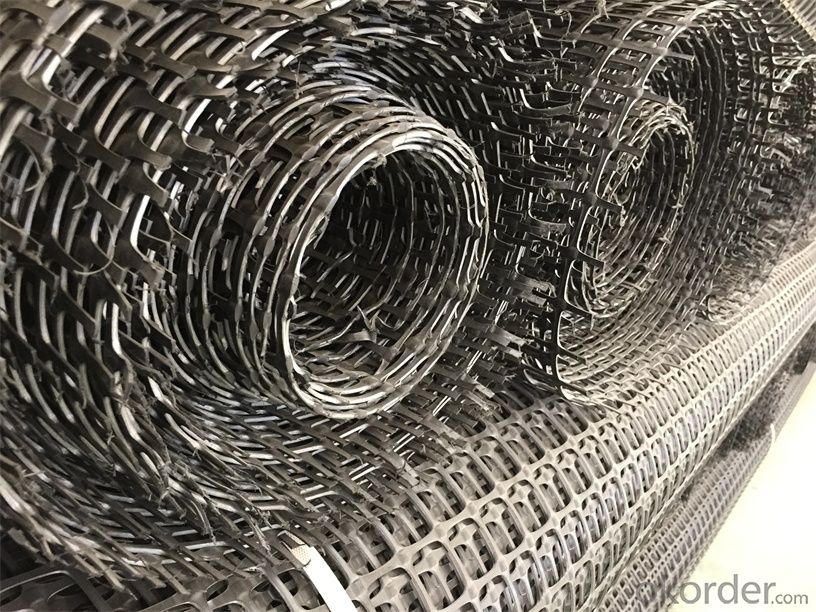
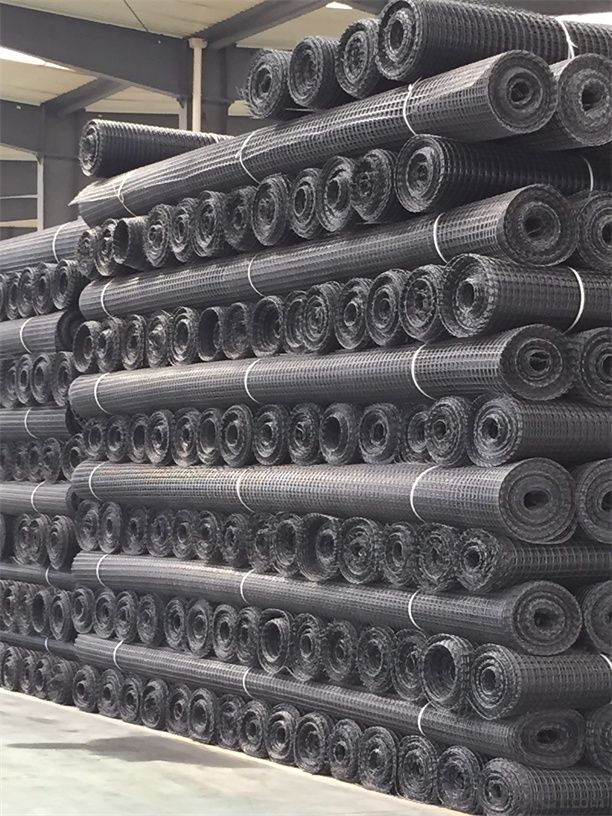
FAQ:
1. How to order your geogrid ?
a) Tensile strength in warp & weft direction
b) Grid size
c) Roll Width and length
d) Quantity
2. What is the Payment term?
a) TT
b) LC AT SIGHT
c) cash
d) 30% contact value as deposit ,the blance 70% be paid after received the copy of bl .
3. Delivery time
a) 19-25 days after received your depsit .
4. What is MQQ ?
a) 2500 m2 as MQQ , we can also produce sample for you .
Welcome to send your inquiry to us, and if you have any question, we can also help you.
- Q: Can geogrids be used in ground improvement techniques?
- Yes, geogrids can be used in ground improvement techniques. Geogrids are commonly employed to reinforce and stabilize weak soils, enhance load-bearing capacity, and control soil erosion. They are effective in various ground improvement applications such as retaining walls, slope stabilization, and road construction. Geogrids provide increased tensile strength and distribute loads, resulting in improved stability and performance of the ground.
- Q: How do geogrids improve the performance of geotechnical structures?
- Geogrids improve the performance of geotechnical structures by providing reinforcement and enhancing stability. They distribute load more effectively, reducing soil movement and preventing erosion. Additionally, geogrids improve the overall strength and durability of structures, increasing their lifespan and reducing maintenance needs.
- Q: Can geogrids be used in reinforcement of rock slopes?
- Yes, geogrids can be used in the reinforcement of rock slopes. Geogrids are commonly used to stabilize and reinforce soil slopes, but they can also be effective in reinforcing rock slopes. By providing additional tensile strength, geogrids can help prevent slope failure and improve the stability and durability of rock slopes.
- Q: I would like to ask the Lebanon warp knitting machine, the model is: Cop - HS_2ST geogrid do know how to process
- The geogrid is mainly composed of plastic geogrid, fiberglass geogrid, steel plastic geogrid, polyester geogrid. The plastic geogrid has a one-way plastic geogrid and a two-way plastic geogrid.
- Q: What are the factors that affect the design and selection of geogrids for geosynthetic reinforcement of steep slopes?
- There are several factors that affect the design and selection of geogrids for geosynthetic reinforcement of steep slopes. Some of the key factors include the slope angle and height, soil type and properties, anticipated loads and stresses, environmental conditions, and project-specific requirements. The geogrid material, strength, aperture size, and installation method must be carefully considered to ensure optimal performance and long-term stability of the reinforced slope. Additionally, factors such as cost, availability, and durability may also influence the selection of geogrids for a particular project.
- Q: Are geogrids suitable for reinforcing slope stabilization mats?
- Yes, geogrids are suitable for reinforcing slope stabilization mats. Geogrids provide additional strength and stability to the mats, helping to prevent erosion and soil movement on slopes. They enhance the load-bearing capacity of the mats and improve their overall performance in stabilizing slopes.
- Q: What is the recommended geogrid junction spacing for specific applications?
- The recommended geogrid junction spacing for specific applications varies depending on factors such as soil conditions, load requirements, and project specifications. It is best to consult with a geotechnical engineer or refer to industry guidelines and standards to determine the appropriate geogrid junction spacing for a specific application.
- Q: Can geogrids be used in reinforcement of underground tunnels and caverns?
- Yes, geogrids can be used in the reinforcement of underground tunnels and caverns. Geogrids are commonly used in geotechnical engineering applications to improve soil stability and provide reinforcement. They can be installed as a reinforcement layer within the tunnel or cavern walls to enhance their structural integrity and prevent potential collapses or deformations. The geogrids act as a reinforcement material, distributing the loads and increasing the overall strength of the underground structures.
- Q: How do geogrids improve the performance of mechanically stabilized slopes in cold climates?
- Geogrids improve the performance of mechanically stabilized slopes in cold climates by enhancing the stability and reinforcement of the soil structure. They provide additional tensile strength to the soil, preventing slope failures caused by frost heave, thaw settlement, and freeze-thaw cycles. Geogrids also distribute the loads more evenly, reducing the risk of slope deformation and improving long-term performance in cold weather conditions.
- Q: How do geogrids help in reducing the need for excavation and grading?
- Geogrids help in reducing the need for excavation and grading by providing structural support and reinforcement to the soil. They distribute the load more evenly, preventing soil movement and settling. This reduces the need for extensive excavation and grading, as the geogrids help stabilize the soil, allowing for the construction of roads, slopes, and retaining walls with minimal earthwork.
Send your message to us
Geogrid Stragrip Sg-150 - Polyester Biaxial Plastic Geogrid with High Tensile Strength Warp Knitted Cmax
- Loading Port:
- Tianjin
- Payment Terms:
- TT OR LC
- Min Order Qty:
- 20000 m²
- Supply Capability:
- 50000000 m²/month
OKorder Service Pledge
OKorder Financial Service
Similar products
Hot products
Hot Searches
Related keywords
